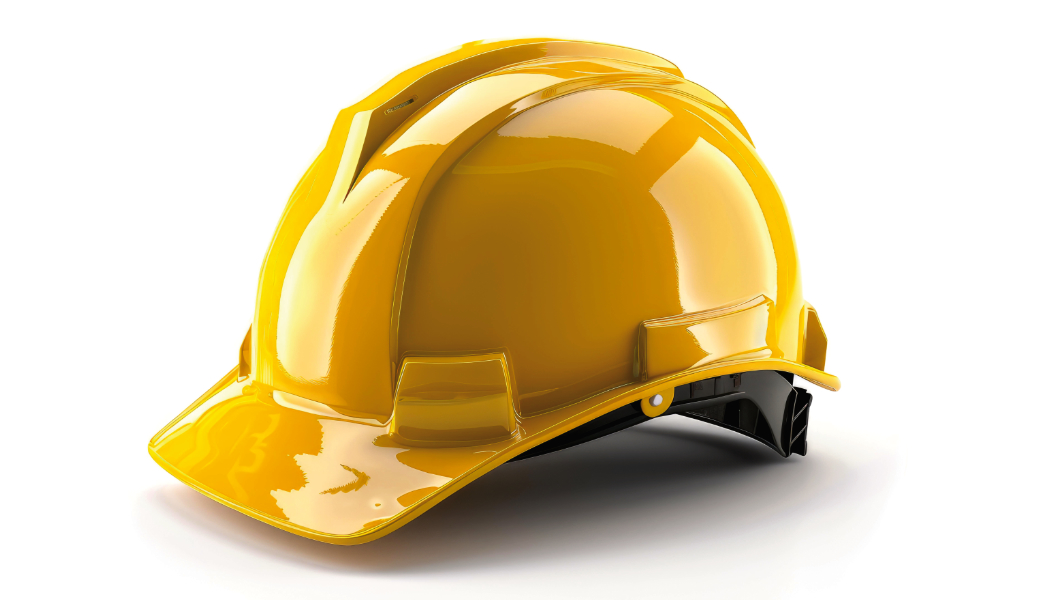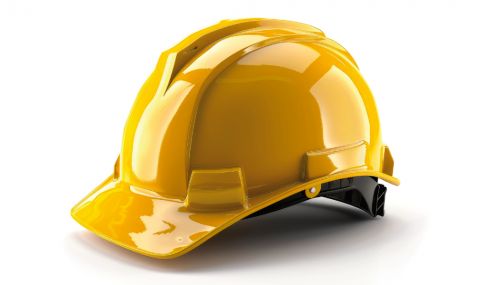All
NSC Study: Employees Do Not Feel as Safe as Employers Believe

Businesses should include and engage workers when developing safety procedures to reduce musculoskeletal disorders.
Nearly 30 percent of workers who experience pain at work don’t report it, and safety leaders consistently rate their workplace safety culture more positively than frontline employees do, according to new research from the National Safety Council, America’s leading nonprofit safety advocate that works to eliminate the leading causes of preventable death and injury, focusing on the workplace and roadway.
The research from “Frontline Worker Perspectives on Musculoskeletal Disorder Prevention,” based on survey data from 1,000 full-time, non-managerial workers across diverse industries, reveals significant disconnects between management perceptions and worker experiences in musculoskeletal disorder (MSD) prevention efforts. The final data set included technology/science professionals (21.9 percent) and skilled/manual labor positions (21.1 percent), as well as health care/social assistance, transportation and warehousing, construction, education services, public administration, utilities, and other industries. More than two-thirds of the respondents had been employed at their current position for more than six years.
The report, published by the NSC MSD Solutions Lab, also found that while most workers are aware of safety programs, many lack understanding of MSDs and don’t know how to report symptoms. These gaps in awareness and engagement are associated with delays in reporting pain and less favorable views of their organization’s ability to prevent MSDs.
According to the report, when workers are actively involved in identifying risks and shaping solutions, businesses and organizations reap improved communication and better safety outcome. These participatory practices of involving workers in job task planning and feedback can foster a move inclusive safety culture.
According to the report, the Key Takeaways are:
Awareness and Understanding of Safety Programs
- Most workers are aware of their organization’s safety and health initiatives, but nearly 1 in 5 don’t have a good understanding of MSDs and very few demonstrate understanding of how tasks can contribute to MSD risk.
- About 70 percent say their workplace has an MSD prevention or ergonomics program, though awareness may not always reflect actual participation in ergonomic initiatives.
- Workers who hear about ergonomics more often tend to have a more positive view of their organization’s ability to prevent injuries.
Pain Reporting and Early Intervention
- Nearly 30 percent of workers who have experienced pain at work don’t report it.
- About 1 in 4 workers either don’t know how to report pain or aren’t sure if a process exists.
- Workers are more likely to report pain promptly when they understand safety programs, hear about ergonomics regularly and are asked about symptoms.
Age and Experience Trends
- Older workers are less likely to have a good understanding of their organization’s safety programs, report pain promptly and feel confident in their workplace’s ability to prevent injuries.
- Newer employees are less likely to suggest safety improvements compared to more tenured workers.
Workplace Tools and Training
- Just under 60 percent of workers say they consistently have access to proper ergonomic tools and equipment.
- While most workplaces offer new hire orientations, key MSD-related topics, like how to use ergonomic tools or report issues, are often missing.
- About half of represented workplaces provide regular ergonomics or MSD prevention training.
Feedback and Engagement
- Around 60 percent of workers know how to suggest safety improvements, but older workers are less likely to be aware of or use these systems.
- Respondents reporting their workplace collects employee feedback and follows up on it tend to have better safety perceptions and faster pain reporting.
- Trust and engagement are stronger when workers feel their input is valued and acted on.
Safety Culture and Trust
- Workers feel most involved in improving job tasks and workflow, but less so in areas like return-to-work processes or mental health.
- Trust decreases with organizational hierarchy: Most workers trust their peers, but fewer trust senior leadership.
- Stronger safety culture and trust are linked to better perceptions of MSD prevention and more proactive reporting.
Non-Physical Risk Factors
- Fatigue and workplace stress were the most commonly reported non-physical risk factors contributing to workplace MSDs, especially among newly hired employees.
Technology and Innovation
- About 41 percent of workers are excited about using technology (like wearables or robots) to improve their jobs.
- However, of those concerned about using technology, over half have concerns about how their data will be used, and nearly half worry about job replacement.
- Workers are more comfortable with technology when they feel involved in decisions, trust leadership and have access to proper tools.
Leadership vs. Frontline Perceptions
- Safety leaders consistently rate their organization’s safety culture, communication, and worker involvement more positively than frontline workers do.
- These perception gaps suggest a need for more inclusive, transparent, and participatory approaches to safety planning and communication.
Frontline Workers
As defined by the NSC, “frontline workers are directly involved with essential workplace tasks and interact daily with equipment, machinery, and work environments. Due to their work, frontline workers often have a firsthand understanding of their risk exposure. They also have the most to gain or lose from an effective or ineffective safety program. Despite this, workplace safety initiatives often lack significant and meaningful frontline worker involvement. While there is increasing recognition of the importance of frontline worker inclusion and participation in the development of safety solutions, many organizations still use a top-down approach when developing safety policies and procedures, where management makes decisions without any direct involvement of frontline workers. Even when organizations do encourage frontline worker input, there are not always formal structures or channels to involve them in safety decision making.”
The report referenced several studies, dating from 2007 to 2023, that revealed discrepancies between the perspective of workers and leaders, where managers, safety leadership teams, and other higher hierarchal positions have a more positive perception of the organization’s safety culture than forepersons, frontline workers, and other lower in the hierarchy. These hierarchies, discrepancy in perceptions of safety, and other power imbalances can also impact frontline workers’ willingness to speak up regarding safety issues.
“A survey among over 10,000 frontline workers and managers found that 50 percent of workers and 55 percent of managers observe an “us vs. them” mentality. Despite differences in the perception of safety culture, frontline workers and managers tend to share the same top concerns. These include slow response to resolving issues or risks, unreasonable expectations or burnout, and pressure to cut corners to save time or money. Another study surveyed 500 safety professionals and asked how senior leaders and staff viewed safety in their organizations. The responses indicated that the safety professionals have more confidence in senior leadership to prioritize health and safety than staff, with respondents commonly viewing staff behavior as one of the biggest barriers to safety culture. The authors make the point that workers may be viewed as more of a liability to safety culture, as opposed to an asset, and that it is necessary to start viewing frontline workers as part of the solution. Participatory practices that actively involve frontline workers in safety and health initiatives may offer a promising approach to bridging these perception gaps and fostering a more unified, collaborative safety culture.”
Musculoskeletal Disorders (MSD)
The NSC defines musculoskeletal disorders (MSDs) as “injuries or disorders affecting the bones, muscles, tendons, ligaments, nerves, and discs that can develop gradually and are often cumulative. Frontline workers, as a group, are more likely to engage in job tasks that involve forceful exertions, repetitive movements, and awkward postures, factors that significantly increase their risk of developing MSDs.”
Frontline workers are, therefore, well aware of the tasks and activities that can cause pain or develop into an injury. Participatory ergonomics includes workers as well as supervisors and others to identify areas where improvement is needed and to design and implement solutions. “When an organization engages in participatory ergonomics, frontline workers are partners in the solution development process and valued for their direct experience with the work environment,” the NSC report stated.
The NSC added that there should be a balance between the technical expertise of safety professionals and the hands-on experience of frontline workers to create an encompassing safety program and reduce the likelihood of gaps in procedures. “Benefits including MSD risk reduction, improved flow of information sharing, more meaningful work, faster implementation of changes and improved performance have been reported in connection with participatory ergonomics programs.”
Study Results
The following results are from the NSC/MSD’s “Frontline Workers’ Perspectives of Musculoskeletal Disorder Prevention” report:
Risk Reduction
- Most respondents know of their organizations’ safety and health initiatives, while 6.8 percent were unsure if their organization had any safety and health initiatives. Nearly all of those that knew about these initiatives (95.4 percent) rated having a “good,” “very good,” or “excellent” understanding of them.
- Almost 20 percent had little to no concept of MSDs, and while respondents were commonly aware that MSDs impact muscles, bones, joints, and connective tissues, less than 1 percent associated MSDs with ergonomics in these written responses.
- Respondents were asked about their organizations’ top three greatest MSD risk factors, and while there was variation by industry, the most common risk factors were 1) lifting, lowering, or carrying; 2) prolonged sitting/standing; and 3) computer-related repetitive activities.
- The neck and back were consistently named by respondents as body parts most impacted by MSDs, though there was some variation by age and industry.
- The majority of respondents also indicated that they sometimes (29.3 percent), often (35.5 percent) or always (8.9 percent) hear ergonomics mentioned in their workplace, whether in trainings, meetings, or other day-to-day activities. Additionally, respondents’ perception of their workplaces’ ability to prevent work-related MSDs is significantly associated with the frequency with which ergonomics is discussed in the workplace.
- Almost two-thirds of respondents (65 percent) reported experiencing pain at work, and among those who have experienced pain, 54.2 percent stated that they report pain immediately or within the day while 28.8 percent responded that they do not report pain at work. Reporting to a supervisor was the most common method in place for reporting early signs of MSDs, such as pain, though 23.2 percent of respondents reported not having a method in place for early reporting or are unsure of their options.
- A majority of workplaces represented in the survey (57.9 percent) were reported by respondents as always or often providing proper ergonomic tools and equipment. However, 18.2 percent of respondents indicated that their workplaces never or rarely provided proper tools and equipment.
Safety Culture
- The observed positive association between having experienced pain at work and more frequent inquiries about early MSD signs and symptoms suggests that organizations where employees are more likely to experience pain may be more proactive in monitoring for signs of MSDs.
- Regarding methods to report early signs of MSDs, 23.2 percent of respondents do not know of a method. Additionally, almost 20 percent of respondents reported having little to no understanding of what MSDs are when they were asked to describe their understanding of the definition.
- The results of the current study that older workers were less prompt in reporting when they experience pain could be due to an increased pain threshold, or that they may perceive pain less acutely than younger individuals. This altered pain perception can contribute to delayed recognition and reporting of pain symptoms.
- Findings that older respondents have lower confidence and understanding of safety and health initiatives may be impacting how promptly they report pain and MSD symptoms. Older workers may have developed greater tolerance for discomfort or found effective workarounds to manage MSDs over time, while those who were less tolerant or unable to adapt may have already left these roles, potentially influencing the current sample.
- Over half (59.8 percent) of respondents indicated that their workplace conducts employee culture, perception, or engagement surveys, though they are less common among respondents in the construction and accommodation and food services industries (32.8 percent and 44.0 percent, respectively).
- Of those who are aware of methods to suggest improvements, utilization of those methods is less common with increased age. Only 9.2 percent of 18- to 40-year-old employees have opted to not share safety/ergonomic improvement ideas, compared to 21.6 percent of 41- to 54-year-olds and 33.9 percent of employees 55 or older.
- Fatigue and workplace stress were the highest non-physical risk factors contributing to MSDs in the workforce, reported by 40.8 percent and 40.3 percent of employees respectively. Fatigue is most common in the construction and transportation and warehousing industries, as well as in newly hired employees.
Worker Involvement and Trust
- Respondents were most often involved in determining where improvements should be made regarding job tasks, workflow and workplace culture and were the least involved when it came to return-to-work processes, mental health and wellbeing, and workstation design.
- Respondents had the highest level of agreement with the statements that workers are encouraged to problem solve using teamwork and that there is open communication between workers and supervisors/managers regarding MSD risk.
- Agreement was lowest with the statements that MSD trends are discussed during safety/ergonomic meetings and that senior leadership communicates the importance of MSDs.
- Most (81.8 percent) of respondents agreed or strongly agreed that there is trust between workers, 72 percent agreed or strongly agreed there is trust between workers and supervisors/managers, and 60.6 percent agreed or strongly agreed there is trust between workers and senior leadership
Action Items
The report concluded by providing action items for employers to consider and implement those that fit their workplace and workforce.
- Increase awareness and understanding of MSDs and MSD prevention strategies
- Improve pain reporting and early intervention
- Support workers who may be underserved in safety efforts
- Ensure access to ergonomic tools and training
- Strengthen feedback and engagement systems
- Foster a stronger safety culture and trust
- Address non-physical risk factors, such as fatigue
- Build trust around technology use
Conclusion
The report concluded that, “the findings offered some unique insights. The strong correlations between Risk Reduction, Safety Culture, and Innovation and Collaboration indicators suggest that when employees feel supported, heard and equipped with the right tools and communication channels, they are more likely to trust their organization’s ability to prevent MSDs — and, in turn, show greater openness and engagement in adopting new technologies and solutions aimed at improving workplace safety.
“Despite aforementioned sampling limitations, comparisons between frontline worker and safety and health leadership responses revealed significant perception gaps when it comes to MSD prevention efforts, safety culture, and worker involvement, suggesting a need for organizations to bridge these gaps through improved communication, education, and truly participatory safety practices to ensure frontline realities are better aligned with leadership intentions. Future research should confirm and continue to explore this gap.”
More information can be found at the MSD Solutions Lab® on the NSC website at https://www.nsc.org/workplace/safety-topics/msd. The full report is available for free download at https://www.nsc.org/faforms/msd-frontline-worker-survey-report.
Related Posts
 New and Improved: NEFI Member Benefits Deliver More Value
New and Improved: NEFI Member Benefits Deliver More Value
Posted on October 17, 2025
 Retirement Accounts Enhance Business and Employee Relations
Retirement Accounts Enhance Business and Employee Relations
Posted on October 16, 2025
 NSC Study: Employees Do Not Feel as Safe as Employers Believe
NSC Study: Employees Do Not Feel as Safe as Employers Believe
Posted on October 16, 2025
 The OBBB and Your Fuel Business: A Summary
The OBBB and Your Fuel Business: A Summary
Posted on September 19, 2025
Enter your email to receive important news and article updates.
